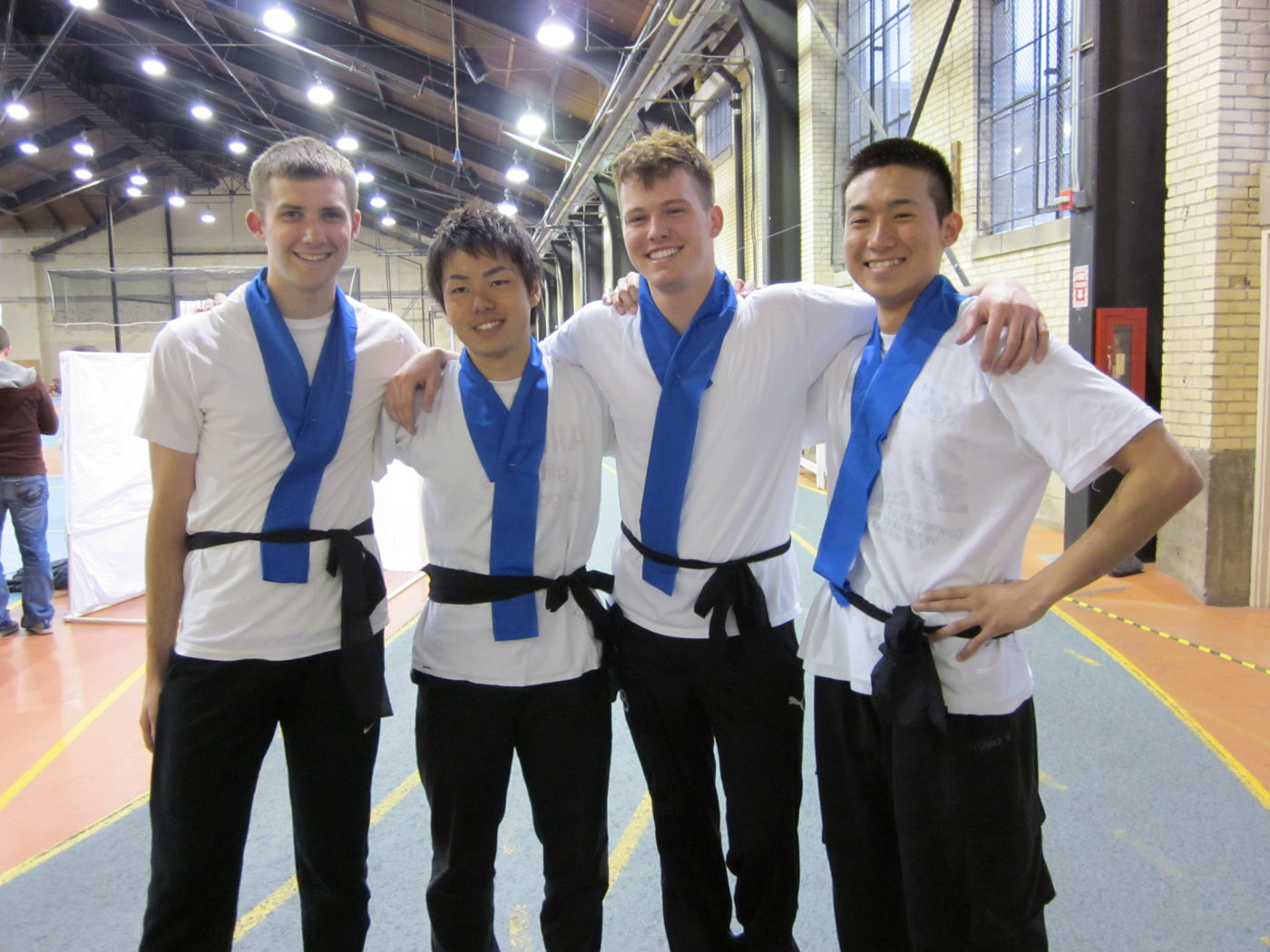Aggies Send Funds and Support to Japan
Utah State University students pledged to raise $15,000 for the Japanese Red Cross after a 9.0 magnitude earthquake struck off the eastern coast of Japan, triggering a tsunami that has claimed more than 14,600 lives to date.
A tally released May 3 at USU pushes the figure to more than $16,000.
However, students are offering more than financial support to survivors. A package containing handwritten letters in the Japanese language was sent to survivors to remind them that they have not been forgotten.
Within hours of receiving word of the disaster, Japanese students at USU began mobilizing relief efforts for their family, friends and countrymen. They were quickly joined by their peers studying Japanese culture and language. Together, over tea at the home of Atsuko Neely, a native of Japan and USU lecturer of Japanese in the Department of Languages and Philosophy, they formulated a plan to raise funds and awareness for the Japanese Red Cross.
“The students just couldn’t sit still doing nothing,” Neely said. “Both the students from Japan and my students worked together; seeing their solidarity was the most beautiful thing.”
Students in Neely’s Japanese 3020 course, a yearlong, upper division language class, and USU students from Japan re-established the university’s Japan Club in spring 2011 just prior to the devastating earthquake and tsunami. The club had not been operating in earnest for several years.
“We take pride in the fact that it is made up with both groups of students and poised to foster mutual understanding and support of both communities,” she said.
Upwards of 30 students participated in shifts to collect donations at the bookstore and library and met with the Logan Chamber of Commerce to generate additional funds. They partnered with groups across campus, including STEP, a branch of ASUSU that helped organize several fundraising events with the goal of generating $15,000. They raised more than $16,000, Neely said.
In the digital age, videos of the tsunami wiping out towns along the coast and flooding villages several miles inland went viral. One could not turn on the news without seeing images of communities that no longer existed, wiped out just minutes after one of the largest earthquakes ever recorded.
“It was just such a shock,” said Tracey Hardman, an Asian Studies minor who helped with relief efforts. “It definitely turned over the direction of our class. I know we felt that we needed to do something.”
However, USU students are providing more than financial support to the survivors of the tsunami who continue to rebuild their lives.
“After the tsunami, Professor Neely found ways to incorporate the relief efforts into the class,” said Hardman. “I think that made it real for us to be able to use our skills.”
In late April, she brought an article from the newspaper “The Mainichi Daily News” to class for her students to read. It contained portions of the diary of a 12-year-old boy named Yuta Hakoishi who lost his father in the disaster. The entries spanned from the last time he saw his dad alive, to the day his mother lost hope of his recovery, as well as the day his body was found by firefighters. The story was picked up by blogs and news services around the world. Neely’s students felt compelled to write in Japanese to Yuta and his classmates at Osawa Elementary School in Yamada, Japan.
“We knew there were thousands of kids in the same situation,” said Hardman. “We wanted them to know that we were thinking of them and that we support them.”
For junior Tyler Andrews, the story reminded him of the day he was jolted awake by a 6.8 magnitude earthquake in 1995. He was 6 and living one hour outside of Kobe, Japan. More than 6,000 died in the earthquake. Andrews’ family would relocate to Utah when he was 11.
“I did not lose my dad in the earthquake, but I do remember being scared,” he said. “In the article Yuta sounded so mature about [the loss of his father.] That was what really moved and impressed me.”
Andrews wrote the boy a letter as a gesture of kindness. Professor Neely mailed the letters the first week of May.
“It gave us the opportunity to understand these are real people, not just news items,” Neely said. “I’m sure a lot of people were moved by this boy, but they were unable to say it to him. With all the tragedies of the tsunami, I think this shows there is hope.”


